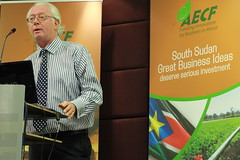Gain More Profit by Harvesting More Low-Hanging Fruit Through Continuing Business Model Innovation
". . . Perennial pleasures plants, and wholesome harvests reaps."
-- Amos Bronson Alcott
"Sweet and low, sweet and low . . . ."
-- Alfred, Lord Tennyson
If you have previously followed new trends in management practices, you know that they often work well for a time, and then seem to run out of steam for creating advantages. That can be true in part because of their novel appeal in the beginning.
With time, there may be some backsliding. Also, competitors may catch on and equalize the temporary advantages that were enjoyed. In this article, we will examine just the opposite approach: how business model innovation can be improved to provide increasing benefits, the longer such innovation is successfully practiced.
Many advice teaching a man to fish, rather than giving him a fish, if you want to help more. But if everyone then knows how to fish, too many fish will be caught and the potential supply of fish declines for everyone.
In fact, everyone would be wasting a lot of time on fishing and not getting very much to eat. How much more beneficial it is for an organization to learn how to fish . . . and how to perpetually expand the supply of easily captured fish at the same time in a way that others cannot duplicate. In this way, people could learn to feed themselves . . . and others so that they can meet all their needs.
When a company produces a superior business model, the sudden abundance of available low-hanging fruit dazzles the senses . . . to distraction. While everyone is grabbing what is now easily available and seemingly limitless, it is hard to focus on preparing to greatly add to and improve the next harvest. The history of the frozen vegetable industry in the United States displays just this problem.
At first, processing and freezing plants were located near the land where the harvests were most dependable because there were many farms and fertile soil. But the plants were i dle for most of the year, as only one harvest annually was possible in most of these locations. For example, Green Giant originally got many of its vegetables from Minnesota.
After several decades, private label manufacturers added plants in California, where two crops a year could be produced. Processing plants experienced lower costs. Having two crops available locally provided less asset-intensive growth by reducing both the amount of plant and inventory investments relative to the annual sales volume. Profit margins for those with one-crop plants were squeezed.
Eventually, a higher-priced fresh market developed for the fruits and vegetables from the two crop regions. This transportation-aided change pushed up the prices that the frozen vegetable processors had to pay, so that their operations became similar in profitability to bountiful harvest, one-crop regions like the Pacific Northwest.
Many fruits and vegetables had historically been picked in the U nited States by low-paid migrant farm hands. With time, the prices paid for this work rose so that it was hard to provide the most labor-intensive fruits and vegetables at a reasonable cost. Birds-Eye moved some of its vegetable and fruit processing into northern Mexico where agricultural labor for harvesting was less expensive.
For over a decade the company missed another important advantage . . . these crops could be grown during three seasons a year in Mexico further reducing costs and asset intensity. As a result, the company was slow to expand in Mexico due to the difficulties in increasing the local use of good farming practices for these fruits and vegetables. Yet, when financial returns were calculated, these Mexican-based products often yielded more than five times the return on investment available in one-crop areas.
At about the same time it moved into Mexico, Birds-Eye had been expanding into all kinds of new frozen products that were not based on fru its and vegetables. Although many of these new frozen products failed, Cool Whip (a frozen non-dairy topping somewhat resembling whipped cream) succeeded.
Any frozen fruit and vegetable plant that also made and stored Cool Whip would see its costs and asset intensity improve in agricultural and artificially made product areas. With this low-hanging fruit for a business model, Birds-Eye kept focusing on adding new artificial frozen foods and high-priced vegetable mixtures.
The losses from the unsuccessful new products ran into the tens of millions of dollars in today's purchasing power. Yet, for most of that time, the organization ignored the Mexican potential.
How could this misplaced focus on the wrong kind of business model development have been avoided? How could business model development have been accelerated? The challenge is to avoid euphoria from success and instead do the hard work on plowing new furrows of business model innovation.
Copyri ght 2008 Donald W. Mitchell, All Rights Reserved
Donald Mitchell is CEO of Mitchell and Company, a strategy and financial consulting firm in Weston, MA. He is coauthor of seven books including Adventures of an Optimist, The 2,000 Percent Solution, and The Ultimate Competitive Advantage. You can find free tips for accomplishing 20 times more by registering at: www.fastforward400.com
Article Source: http://EzineArticles.com/?expert=Donald_Mitchell
